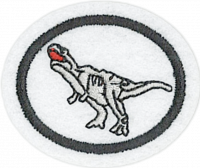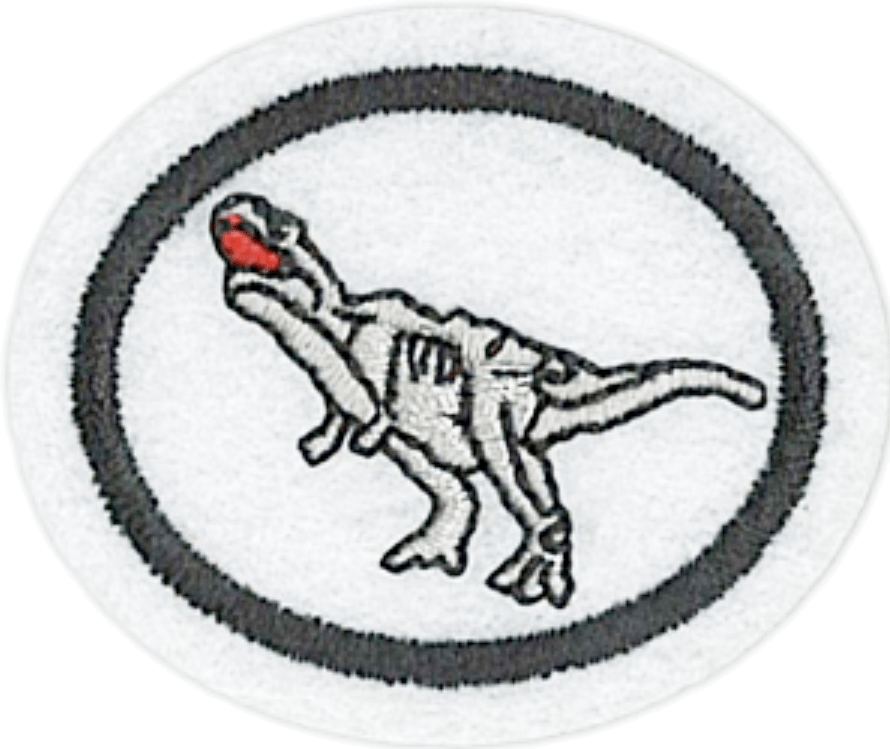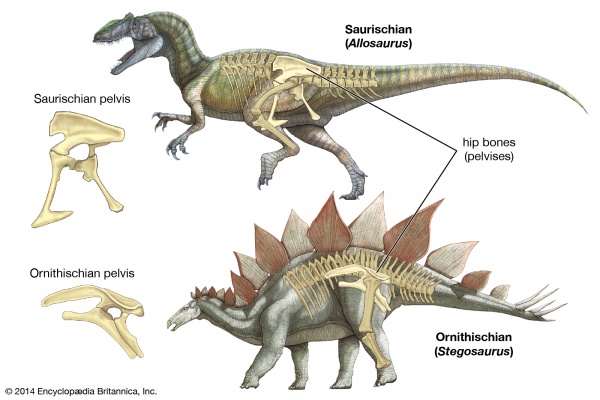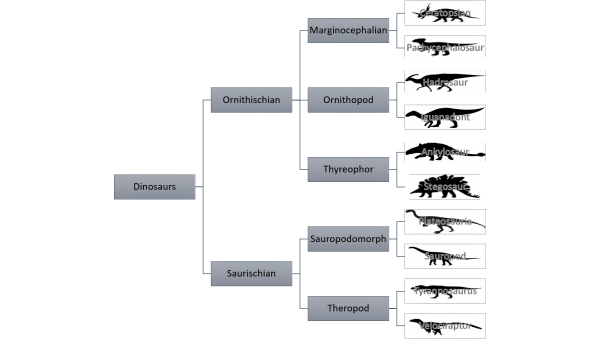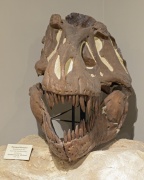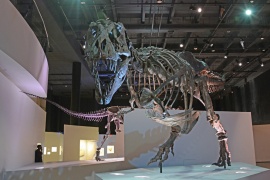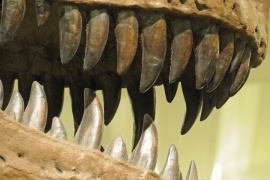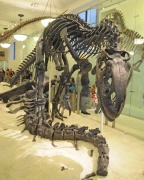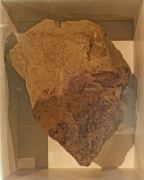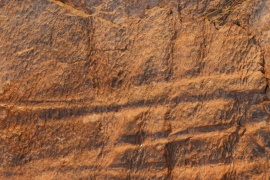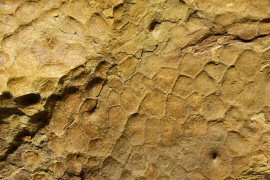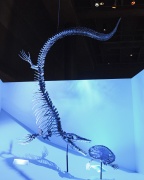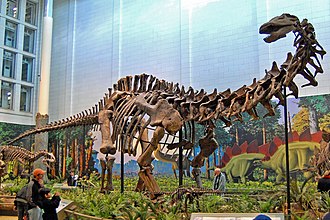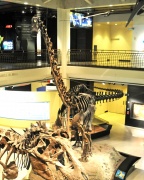Difference between revisions of "AY Honors/Dinosaurs/Answer Key/es"
(Created page with "<gallery mode="packed"> Image:TyrannosaurusRex 0886 W.jpg Image:TyrannosaurusRex 1065 W.jpg Image:Tyrannosaurus rex 4208 W.jpg </gallery>") |
(Created page with "<noinclude>") |
||
| Line 103: | Line 103: | ||
{{CloseReq}} <!-- 3c --> | {{CloseReq}} <!-- 3c --> | ||
{{ansreq|page={{#titleparts:{{PAGENAME}}|2|1}}|num=3d}} | {{ansreq|page={{#titleparts:{{PAGENAME}}|2|1}}|num=3d}} | ||
| − | <noinclude> | + | <noinclude></noinclude> |
| − | </noinclude> | + | : Taxonomía: Animalia → Cordata → Sauropsida → Dinosauria → Saurischia → Sauropodomorfos |
| − | |||
| − | |||
| − | + | : Los Sauropodomorfos es un clado de dinosaurios herbívoros de cuello largo, pertenecientes al orden Saurisquia que incluye a los Saurópodos y sus antepasados. Fueron los herbívoros terrestres dominantes durante la mayor parte de la Era Mesozoica, desde principios del Triásico medio hasta su declive y extinción a finales del Cretácico. | |
| − | |||
| − | |||
| − | + | {{clear}} | |
| − | |||
| − | |||
| − | + | {{clear}} | |
| − | |||
| − | |||
| − | + | ; ¿En qué dos grupos se dividen? | |
| − | + | : Los Sauropodomorfos se dividen en dos categorías: | |
| − | + | :* Prosauropodos: Son el infraorden de dinosaurios Sauropodomorfos que vivieron desde el Triásico superior hasta el Jurásico inferior (hace aproximadamente 217 y 184 millones de años, desde el Noriense hasta el Bajociano), en lo que es hoy América, Europa, Asia y África. | |
| − | + | :* Saurópodos: Son un infraorden de dinosaurios sauropodomorfos que vivieron desde el Triásico Superior hasta el Cretácico Superior (hace aproximadamente 210 y 65 millones de años, desde el Noriense hasta el Maastrichtiense), en lo que hoy es América, Asia, Europa, África, Oceanía y la Antártida. Eran herbívoros y eran cuadrúpedos. | |
| − | + | <noinclude></noinclude> | |
| − | <noinclude | ||
| − | |||
{{CloseReq}} <!-- 3d --> | {{CloseReq}} <!-- 3d --> | ||
{{ansreq|page={{#titleparts:{{PAGENAME}}|2|1}}|num=3e}} | {{ansreq|page={{#titleparts:{{PAGENAME}}|2|1}}|num=3e}} | ||
| − | <noinclude> | + | <noinclude></noinclude> |
| − | </noinclude | ||
| − | |||
| − | |||
<div lang="en" dir="ltr" class="mw-content-ltr"> | <div lang="en" dir="ltr" class="mw-content-ltr"> | ||
Revision as of 22:12, 8 April 2021
1
- ¿Qué significa el término dinosaurio?
- La palabra «dinosaurio» es una combinación latinizada de las raíces griegas «deinos» [terrible] y «sauros» [lagarto] - así que la palabra significa «lagarto terrible».
- ¿Quién usó este término por primera vez?
- Sir Richard Owen, un anatomista y taxonomista británico, acuñó el término a principios de los años 1840 después de determinar que un grupo de huesos fosilizados que él estudió, incluyendo aquellos de un Iguanodonte y un Megalosaurio, no eran lagartos, sino algo excepcionalmente diferente.
- Clasificación
- Los dinosaurios se dividen generalmente en dos grupos, que se distinguen principalmente por las diferencias en la disposición de sus huesos pélvicos. Cada uno de estos grupos se subdividen en base a otras características comunes:
- Ornitisquios («caderas de ave»)
- Tireóforos («porta-escudos») dinosaurios blindados.
- - Ankylosaurio («lagarto acorazado»)
- - Estegosaurio («lagarto con tejado» o «lagarto cubierto»)
- Marginocéfalos («cabezas con reborde»)
- - Ceratopsios («cabezas con cuernos») herbívoros cuadrúpedos como el Triceratops.
- - Paquicefalosáurio («lagarto de cabeza gruesa») mayormente bípedos con huesos craneales engrosados como un casco.
- Ornitópodos («pie de ave»)
- - Hipsilofodonte («dientes protuberantes») herbívoros pequeños.
- - Iguanodontes («dientes de iguana») / Hadrosáuridos («lagarto corpulento/grueso») herbívoros más grandes.
- Saurisquios («cadera de lagarto»)
- Terópodos («pie de bestia») principalmente bípedos carnívoros
- - Tiranosaurio («lagarto tirano»)
- - Deinonychus («garra terrible»)
- Sauropodomorfos («forma de pata de reptil») principalmente herbívoros bípedos y cuadrúpedos
- Prosauropodos / Plateosaurios: Más pequeños, mayormente herbívoros bípedos.
- - Saturnalia («carnaval»)
- - Tecodontosáurio («lagarto con dientes en cuencas»)
- Saurópodos («pata de reptil») Mucho más grandes, principalmente herbívoros quadrúpedos.
- - Apatasaurio («largarto engañoso») o Brontosaurio («lagarto del trueno»)
- - Braquiosaurio («largarto con brazo»)
- - Diplodoco («largarto de doble viga») / Seismosaurio
- - Saltasaurio («largarto de Salta»)
2
Uno de los primeros pasos en la reconstrucción de dinosaurios es la anatomía comparativa. Debido a que los huesos a menudo tienen rasgos, funciones y articulación análogos, los paleontólogos pueden hacer un primer conjunto de suposiciones sobre el tamaño, la forma y el modo de andar del dinosaurio, incluso con sólo un pequeño número de huesos. Una investigación detallada de huesos puede revelar señas de agarre muscular, que puede dar más forma al dinosaurio. Los paleontólogos también usan la anatomía comparativa para ver formas básicas de animales en ambientes similares, usando pistas de la roca y otros fósiles alrededor de los huesos de dinosaurios para inferir un ecosistema en particular, y mirando modelos potenciales en animales modernos que viven en ecosistemas similares. En algunos casos, las impresiones de la piel y las plumas pueden ofrecer algunas pistas en cuanto a la apariencia externa. Aunque no hay fosilización del color, los paleontólogos pueden extraer algunas inferencias de patrones y de colores de los animales modernos que viven en ecosistemas similares o tienen estilos de vida similares.
3
3a
- El tiranosaurio rex fue el principal depredador/consumidor en su entorno. Al igual que el león es el «rey» en su entorno moderno, así también el tiranosaurio y sus semejantes eran especies «rey». El tiranosaurio era particularmente notable por su cabeza/quijada muy grande (la cual sugieren poder de mordedura significativimo) y sus dientes grandes. El tiranosaurio se encuentra en los yacimientos del Cretácico Superior en Norteamérica. Las imágenes siguientes exhiben las quijadas y los dientes de este dinosaurio rey.
3b
- Muchos reptiles modernos son ponedores de huevos, así como son las aves modernas, las cuales están relacionadas con los dinosaurios según los evolucionistas. Han sido encontrados huevos de dinosaurio fosilizados, ofreciendo evidencia de que al menos algunos de los dinosaurios eran ponedores de huevos.
3c
A continuación hay tres muestras de piel de dinosaurio fosilizada:
3d
- Taxonomía: Animalia → Cordata → Sauropsida → Dinosauria → Saurischia → Sauropodomorfos
- Los Sauropodomorfos es un clado de dinosaurios herbívoros de cuello largo, pertenecientes al orden Saurisquia que incluye a los Saurópodos y sus antepasados. Fueron los herbívoros terrestres dominantes durante la mayor parte de la Era Mesozoica, desde principios del Triásico medio hasta su declive y extinción a finales del Cretácico.
- ¿En qué dos grupos se dividen?
- Los Sauropodomorfos se dividen en dos categorías:
- Prosauropodos: Son el infraorden de dinosaurios Sauropodomorfos que vivieron desde el Triásico superior hasta el Jurásico inferior (hace aproximadamente 217 y 184 millones de años, desde el Noriense hasta el Bajociano), en lo que es hoy América, Europa, Asia y África.
- Saurópodos: Son un infraorden de dinosaurios sauropodomorfos que vivieron desde el Triásico Superior hasta el Cretácico Superior (hace aproximadamente 210 y 65 millones de años, desde el Noriense hasta el Maastrichtiense), en lo que hoy es América, Asia, Europa, África, Oceanía y la Antártida. Eran herbívoros y eran cuadrúpedos.
3e
The flying reptiles (in the Order Pterosaurs, or “Winged Lizards”)
Marine reptiles are in several groups, including the Superorder Ichthyopterygia and the Superorder Sauropterygia. The marine reptiles pictured below, beginning from top left: two Plesiosaurs, two Mosasaurs, and two Ichtyosaurs.
4
You can combine your research for question 4 and 7. Rather than just a food chain (which is effectively a linear set of connections - a primary producer, a primary consumer, a secondary consumer, perhaps a tertiary consumer), consider a food pyramid (which provides several variations at the base, working up to fewer species at the higher levels - a closer representation to nature than a single line), or a food web, which highlights the complexity of ecological systems.
"La cadena alimentaria de los dinosaurios. La flecha color malva la alimentación de los insectos; verde, la comida del lagarto; amarilla, la de los omnívoros; naranja la de los ornithomimidos; azul los dromaeosaurios; y rosa, la del Tyranosaurio. Los tres últimos eran dinosaurios carnívoros."
5
5a
Means "lizard-footed", are an infraorder of saurischian ("lizard-hipped") dinosaurs. They had very long necks, long tails, small heads (relative to the rest of their body), and thick, pillar-like legs. They are notable for the enormous sizes attained by some species, and the group includes the largest animals to have ever lived on land.
5b
Theropods were commonly bipedal, with a relatively large head and a counter-balancing tail. These were primarily carnivorous, and include the Tyrannosaurus Rex.
Examples of Teropods:
5c
Ceratopsians (Marginocephalians) were primarily quadrapedal ornithischians, characterized by a bony frill at the back of the head, and often horns on the face.
Examples of Ceratopsians below:
5d
The Ankylosaurs are one of the characteristic forms of the Thyreophors, or armored dinosaurs. They were low-slung, had various armored plates on their backs, and often had a club or other armored element on their tails. Other Thyreophors include the Stegosaurs, which had bony plats on their backs and spikes on their tails.
5e
Plesiosaurs were marine reptiles, with an oval body, a long tail and neck, and flippered limbs.
5f
Pterosaurs were flying marine reptiles, with membraneous wings, frequently with short or minimal tails (though not always), and often with counterbalancing horns on their heads.
Below is one of the larger Pterosaurs. Other Pterosaurs are pictured above.
6
6a
20 And God said, “Let the water teem with living creatures, and let birds fly above the earth across the vault of the sky.” 21 So God created the great creatures of the sea and every living thing with which the water teems and that moves about in it, according to their kinds, and every winged bird according to its kind. And God saw that it was good. 22 God blessed them and said, “Be fruitful and increase in number and fill the water in the seas, and let the birds increase on the earth.” 23 And there was evening, and there was morning—the fifth day. 24 And God said, “Let the land produce living creatures according to their kinds: the livestock, the creatures that move along the ground, and the wild animals, each according to its kind.” And it was so. 25 God made the wild animals according to their kinds, the livestock according to their kinds, and all the creatures that move along the ground according to their kinds. And God saw that it was good.
There are a number of other Bible texts that mention reptiles.
6b
Fossils of dinosaurs have been discovered around the world. There are also fossilized dinosaur footprints.
6c
i
ii
6d
The Biblical Flood found in Genesis would explain how many dinosaurs could be quickly killed and buried to be preserved as fossils. If an animal dies and is not buried quickly under extreme conditions it does not usually fossilize. Even evolution believing scientists agree that dinosaurs were killed off in a global catastrophe. The big debate is when the catastrophe occurred.
7
You can work on this research when you investigate question 4. The purpose here is to do more than describe the basic characteristics of the dinosaur, but to consider them in a living environment, as you would with a modern extant animal. This requires study of the plant life, other dinosaurs and other animals that would have lived in the same area, and consider the way they they would have interacted.
7a
7b
7c
8
8a
8b
8c
8d
We provide some examples but searching natural history museum websites will yield good information as will searching Wikipedia. Be careful with the scientific estimations of the age of specimans which do not match God's Word. This should be discussed with Pathfinders studying dinosaurs.
References
The Dino Database ([1]) has a list of museums in the United States that display dinosaurs. Although not necessarily a complete list, this provides a good start to find dinosaur fossils in your area. You may also consider contacting nearby universities, if there are no museums in your area.
